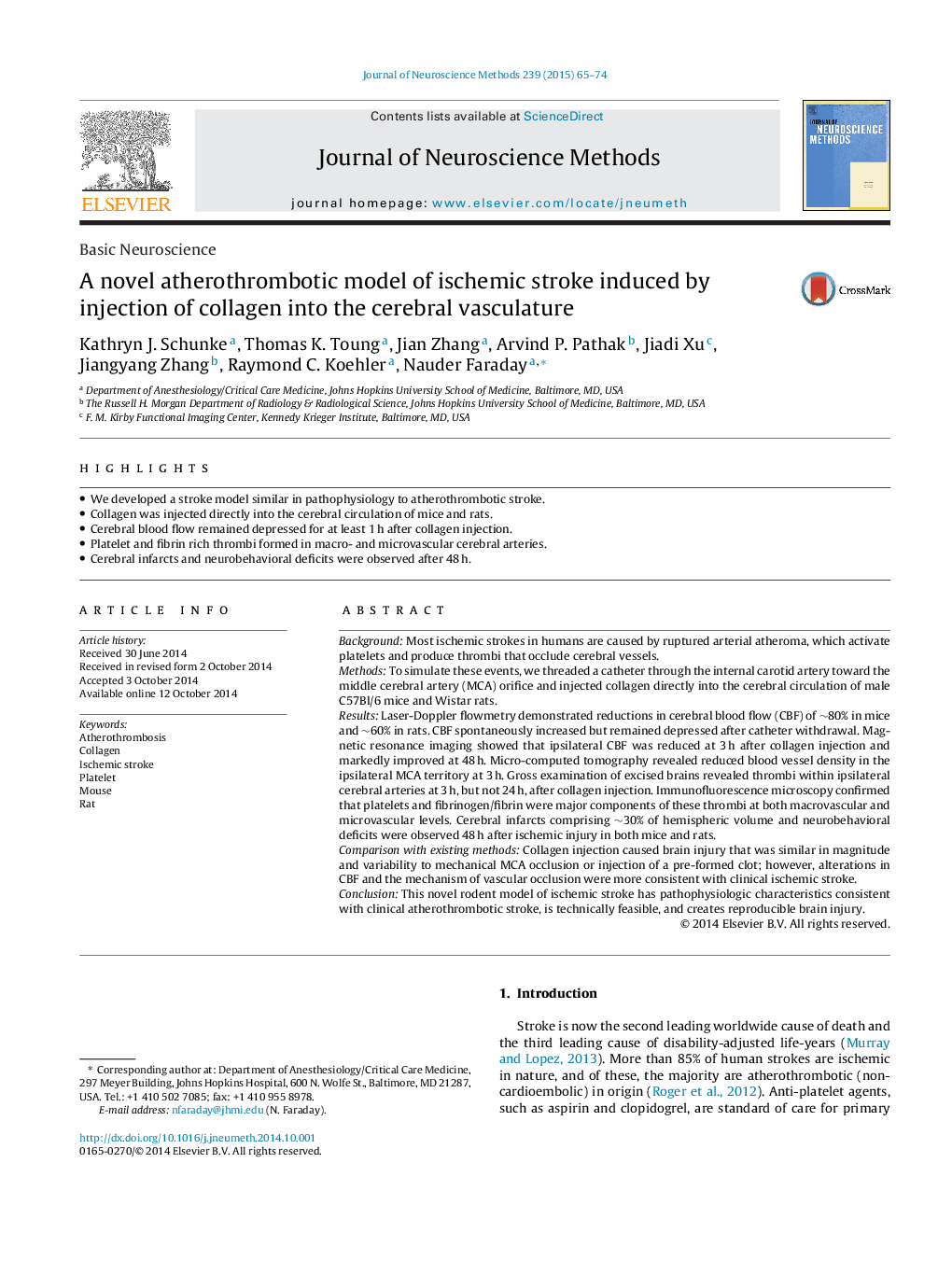| کد مقاله | کد نشریه | سال انتشار | مقاله انگلیسی | نسخه تمام متن |
|---|---|---|---|---|
| 6268522 | 1614630 | 2015 | 10 صفحه PDF | دانلود رایگان |
- We developed a stroke model similar in pathophysiology to atherothrombotic stroke.
- Collagen was injected directly into the cerebral circulation of mice and rats.
- Cerebral blood flow remained depressed for at least 1Â h after collagen injection.
- Platelet and fibrin rich thrombi formed in macro- and microvascular cerebral arteries.
- Cerebral infarcts and neurobehavioral deficits were observed after 48Â h.
BackgroundMost ischemic strokes in humans are caused by ruptured arterial atheroma, which activate platelets and produce thrombi that occlude cerebral vessels.MethodsTo simulate these events, we threaded a catheter through the internal carotid artery toward the middle cerebral artery (MCA) orifice and injected collagen directly into the cerebral circulation of male C57Bl/6 mice and Wistar rats.ResultsLaser-Doppler flowmetry demonstrated reductions in cerebral blood flow (CBF) of â¼80% in mice and â¼60% in rats. CBF spontaneously increased but remained depressed after catheter withdrawal. Magnetic resonance imaging showed that ipsilateral CBF was reduced at 3Â h after collagen injection and markedly improved at 48Â h. Micro-computed tomography revealed reduced blood vessel density in the ipsilateral MCA territory at 3Â h. Gross examination of excised brains revealed thrombi within ipsilateral cerebral arteries at 3Â h, but not 24Â h, after collagen injection. Immunofluorescence microscopy confirmed that platelets and fibrinogen/fibrin were major components of these thrombi at both macrovascular and microvascular levels. Cerebral infarcts comprising â¼30% of hemispheric volume and neurobehavioral deficits were observed 48Â h after ischemic injury in both mice and rats.Comparison with existing methodsCollagen injection caused brain injury that was similar in magnitude and variability to mechanical MCA occlusion or injection of a pre-formed clot; however, alterations in CBF and the mechanism of vascular occlusion were more consistent with clinical ischemic stroke.ConclusionThis novel rodent model of ischemic stroke has pathophysiologic characteristics consistent with clinical atherothrombotic stroke, is technically feasible, and creates reproducible brain injury.
Journal: Journal of Neuroscience Methods - Volume 239, 15 January 2015, Pages 65-74
